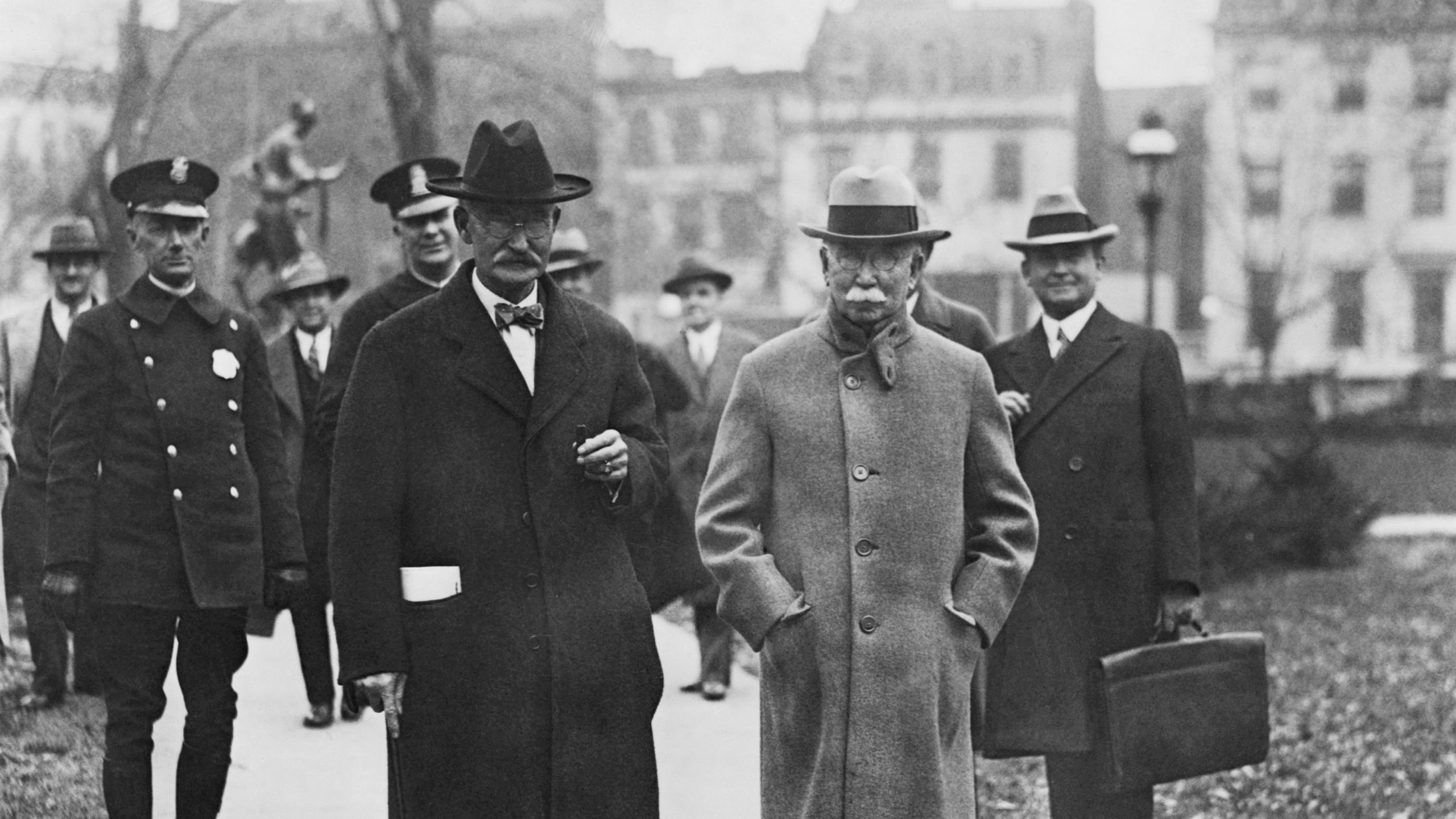In the early 1920s, President Warren G. Harding was hailed as a man of the people—charming, approachable, and, to many, a welcome relief after World War I. But behind his easygoing image simmered a storm of betrayal and backroom deals. The Teapot Dome Scandal wouldn’t just tarnish Harding’s presidency—it would redefine the limits of political loyalty and public trust.
Harding’s Fatal Flaw: Loyalty to the Wrong Men
Harding’s greatest political sin wasn’t corruption—it was cronyism. He filled the upper echelons of government with friends and poker buddies from Ohio, a group famously dubbed the “Ohio Gang.” Unfortunately, many of these men saw federal power not as a duty—but as a payday.
While Harding himself wasn’t caught with dirty hands, those around him were elbows-deep in scandal. Attorney General Harry Daugherty was accused of selling confiscated liquor during Prohibition. Charles R. Forbes, head of the Veterans Bureau, was caught embezzling millions meant for war heroes.
But one scandal dwarfed them all…
Enter Albert B. Fall: The Oil Plot Unfolds
At the heart of the Teapot Dome saga stood Secretary of the Interior Albert B. Fall—a once-respected New Mexico senator and rancher. Fall convinced Harding to transfer control of two strategic oil reserves—Teapot Dome in Wyoming and Elk Hills in California—from the Navy to his department.
Then, in a move that stank of secrecy and self-interest, Fall leased those reserves to powerful oilmen Harry F. Sinclair of Mammoth Oil and Edward L. Doheny of Pan American Petroleum, without competitive bidding.
Behind closed doors, sweet crude turned to cold, hard cash.
🔗 Explore the full Senate investigation archives → U.S. Senate Historical Office
The Bribes, the “Loans,” and the Betrayal
It didn’t take long for investigators to follow the money. What they discovered was stunning: Fall received over $400,000 in what were dubbed “loans,” but were unmistakably bribes—a staggering sum at the time. Doheny delivered $100,000 in a black bag, while Sinclair funneled funds and gifts through shell companies.
When questioned, Fall insisted it was all above board. But congressional committees saw through the lies.
The Scandal Erupts and the Nation Reacts
In 1922, Senator Thomas J. Walsh of Montana began a dogged inquiry. The deeper he dug, the darker the truth became. By 1924, the scandal had consumed headlines, infuriated citizens, and crippled public faith in the federal government.
President Harding never lived to see it implode. While touring the West Coast in 1923, his health failed under mounting stress. He died suddenly in San Francisco, likely unaware of just how deeply the betrayal ran.
📜 Harding’s mysterious death and the scandal timeline – National Constitution Center →
Conviction, Consequence, and Firsts in American History
Albert B. Fall was ultimately convicted in 1929 for accepting bribes—becoming the first sitting Cabinet member ever sent to prison. He served a one-year sentence, though many felt his punishment paled in comparison to the damage done.
Harding’s administration, posthumously, was forever stained. Though he was never proven complicit, his judgment—and his loyalty—became a national cautionary tale.
Sinclair served time for contempt and jury tampering, while Doheny managed to walk free, escaping conviction despite the brazen paper trail.
Teapot Dome’s Long Shadow Over American Politics
The Teapot Dome Scandal wasn’t just about oil—it was about opacity, unchecked authority, and how loyalty without scrutiny can turn deadly. The scandal laid bare the dangers of a presidency surrounded by opportunists.
It also reshaped government accountability, prompting Congress to pass new legislation strengthening the Senate’s power to investigate and publicly question Cabinet officials.
📚 Read how Teapot Dome led to new ethics laws – National Archives
Frequently Asked Questions
What was the Teapot Dome Scandal?
A 1920s bribery scandal where U.S. Interior Secretary Albert Fall illegally leased federal oil reserves to private companies without public bidding.
Why was it called “Teapot Dome”?
One of the oil reserves was located in Teapot Dome, Wyoming—named for a nearby rock formation shaped like a teapot.
Who were the key figures?
Albert B. Fall (Interior Secretary), Harry F. Sinclair (Mammoth Oil), Edward L. Doheny (Pan American), and indirectly, President Harding.
Was President Harding guilty?
No criminal evidence directly linked him, but his poor judgment in appointing corrupt officials contributed to the scandal.
What were the consequences?
Fall was convicted and imprisoned. The scandal led to significant reforms in oversight and investigative powers of Congress.
Why does Teapot Dome still matter today?
It set historical precedent for prosecuting high-level government corruption and remains a landmark case in the evolution of political ethics.

